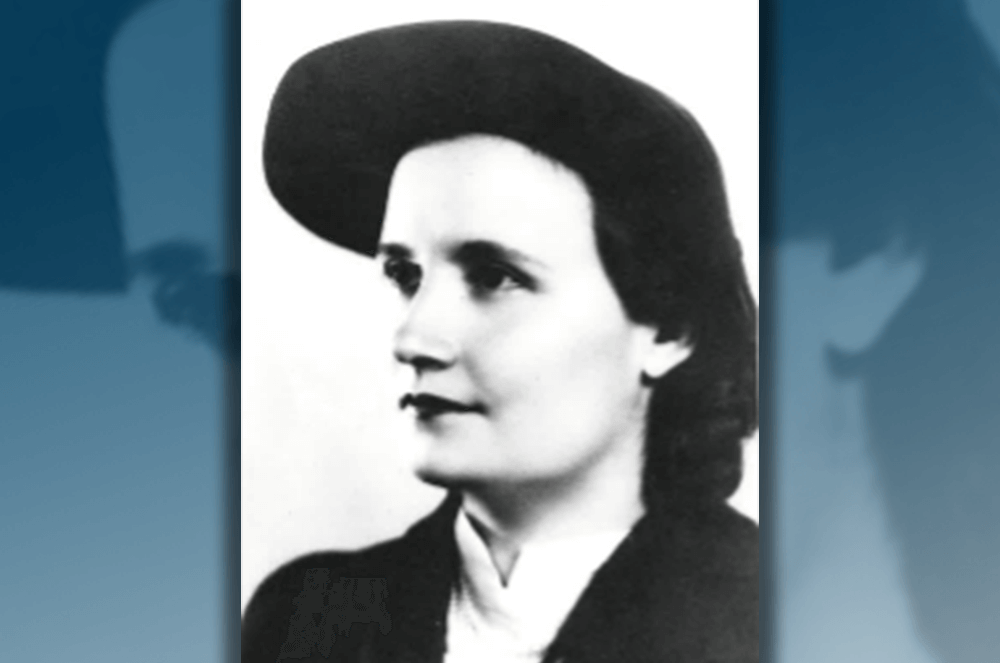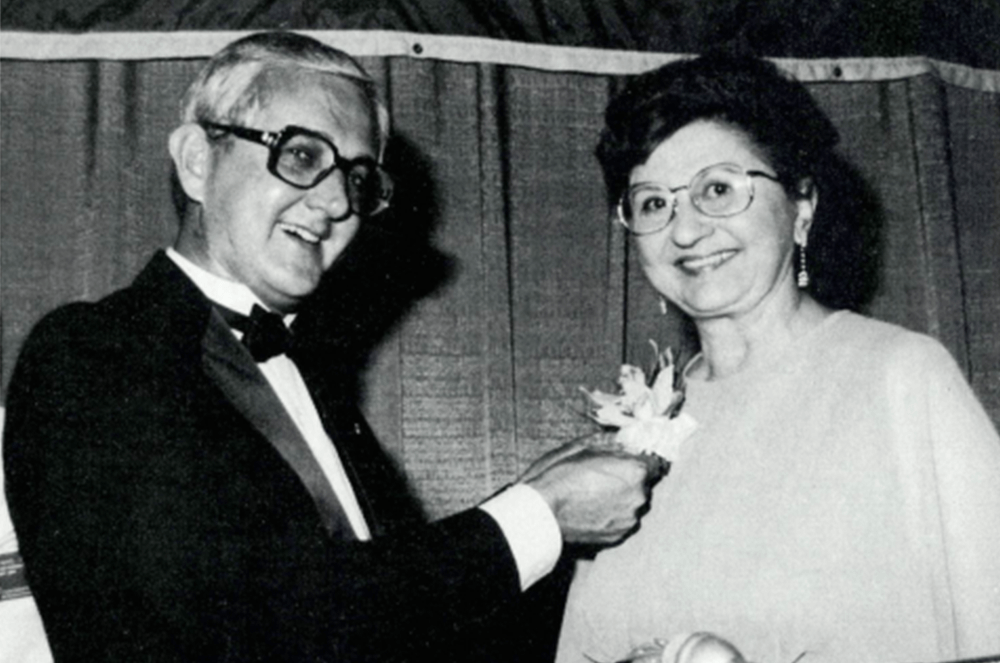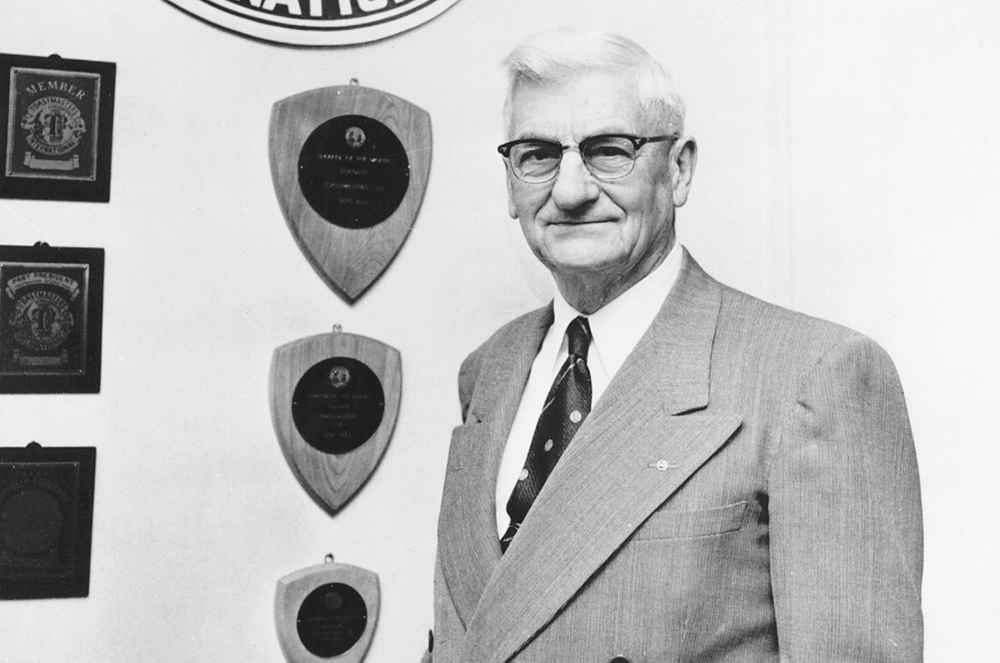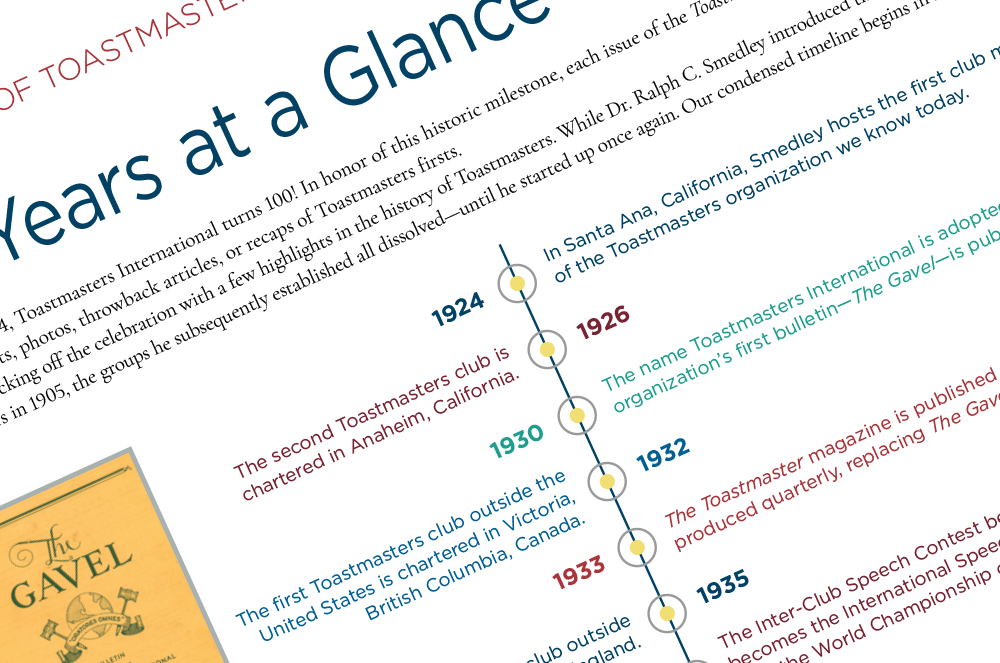
It’s been more than 50 years since women were officially admitted as Toastmasters members, and with currently more women than men in the organization, it’s hard to imagine a time when women weren’t officially recognized.
When Toastmasters formed in 1924, most members considered their club as a source of male camaraderie. The workforce was overwhelmingly male-dominated, so the organization appealed primarily to men who shared similar workplace experiences. Many women also believed that membership in a Toastmasters club was synonymous with “men-only” interests and activities.
However, that didn’t mean that women weren’t interested in polishing their speaking skills. In 1926—only two years after the first Toastmasters club meeting was held—a group of wives who were attending a “ladies’ night” meeting at a club in Anaheim, California, were stirred to action. They formed a speech club for themselves, calling it The Toasties.
Within a few years, women’s speech clubs had sprung up in Southern California and nearby regions. Several women from these clubs met at the 1937 Toastmasters International Convention and discussed forming a permanent women’s organization.
Toastmasters founder Dr. Ralph C. Smedley and other leaders offered their guidance as well, and in 1938, the International Toastmistress Clubs (ITC) incorporated, with Ernestine White serving as its first President and a policy to “foster free and open discussion without bias on all subjects, whether political, social, economic, racial, or religious.”
Toastmasters International seemed pleased with the group’s decision. “There are decided advantages when parallel organizations are maintained,” said an article in the June 1937 issue of The Toastmaster. “The men’s club and the women’s club can hold joint meetings, exchange programs, aid with criticism, and help each other mightily.”
Within a year, ITC had chartered 20 clubs, began publishing the Toastmistress magazine, and held its first convention, which ran alongside the 1939 Toastmasters International Convention.
 Winners of the 1963 Toastmistress Speech Contest
Winners of the 1963 Toastmistress Speech ContestITC was organized similarly to Toastmasters International, with regular meetings, prepared speeches, educational program manuals, and speech contests. However, the two organizations were fully independent of each other.
Toastmistress leaders emphasized that their clubs were not a frivolous female activity but rather a place to develop true communication and leadership skills.
In June 1940, the ITC President, Vera Hansen, explained the organization’s benefits as such:
A Toastmistress is a woman who can preside over any kind of group meeting—not just a dinner meeting. A real Toastmistress is one who can conduct a forum, a discussion, a panel, a conference—one who knows when, where, and how to use the various forms of procedure. Speech and leadership cannot be separated. A Toastmistress is not one who makes sweet little talks about the weather or about the rise and fall of women’s skirts or gives rehashed material from a magazine. When she speaks, she really says something.
By 1946, the first Canadian club was chartered, followed shortly by a club in Scotland. Continued growth resulted in the formation of regions, as well as an international headquarters in Downey, California. The 1,000th charter was presented in 1959, and the word “Toastmistress” appeared in the Merriam-Webster dictionary.
While the ITC was thriving, by the 1960s, the bond between it and Toastmasters International was quickly deteriorating. With the number of women in the workforce increasing daily, more and more women felt they would benefit from membership in a communication and leadership organization that included both genders rather than segregating them. Additionally, there simply weren’t as many women-only Toastmistress clubs as there were Toastmasters clubs.
Nevertheless, the ITC continued to grow, particularly in New Zealand, Australia, Japan, and South Africa. In 1973 (the same year that Toastmasters officially allowed women members), Toastmistresses amended their bylaws to provide that clubs could not discriminate on the basis of sex.
In 1985, the International Toastmistress Clubs voted to change the name of the organization to International Training in Communication (ITC), forming a nonprofit organization of public speaking clubs open to all genders.
In honor of Toastmasters International’s 100th anniversary, this is the third in a year-long series of articles commemorating historic milestones.
The Toastmaster magazine staff is composed of four editorial team members. Learn more about them on the Staff page.
Related Articles

Toastmasters News
Celebrating the History of Women in Toastmasters

Toastmasters History
Remembering Dr. Ralph C. Smedley

Toastmasters History



 Previous
Previous

 Previous Article
Previous Article